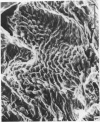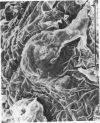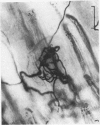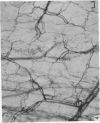Abstract
1. The sensitivity of Type I slowly adapting mechanoreceptors in cat and monkey skin to temperature and changes in temperature was investigated.
2. Multiple receptors innervated by a single axon appeared to be more frequent in the monkey than in the cat skin.
3. The responses of these receptors to thermal stimulation at static skin temperatures from 27 to 40° C were similar in cats and monkeys. At 43° C the monkey receptors showed a higher steady-state activity than the cat receptors.
4. A maximum steady-state frequency of 5·5 impulses/sec occurred in both the cat and monkey receptors at a static skin temperature of 37° C.
5. The maximum dynamic response to cooling occurred at a skin temperature of 40° C. The response was near its maximum at 2° C cooling and increased but little with further increases in the intensity of cooling.
6. Dynamic responses to cooling disappeared after the skin had been heated to 51° C for 35 sec and to mechanical stimulation after heating to 53° C for 35 sec. Excitation by either mechanical or thermal stimulation did not reappear within 1-2 hr.
7. The response characteristics of the Type I slowly adapting mechanoreceptors to temperature and temperature changes differ from those of specific cold receptors.
Full text
PDF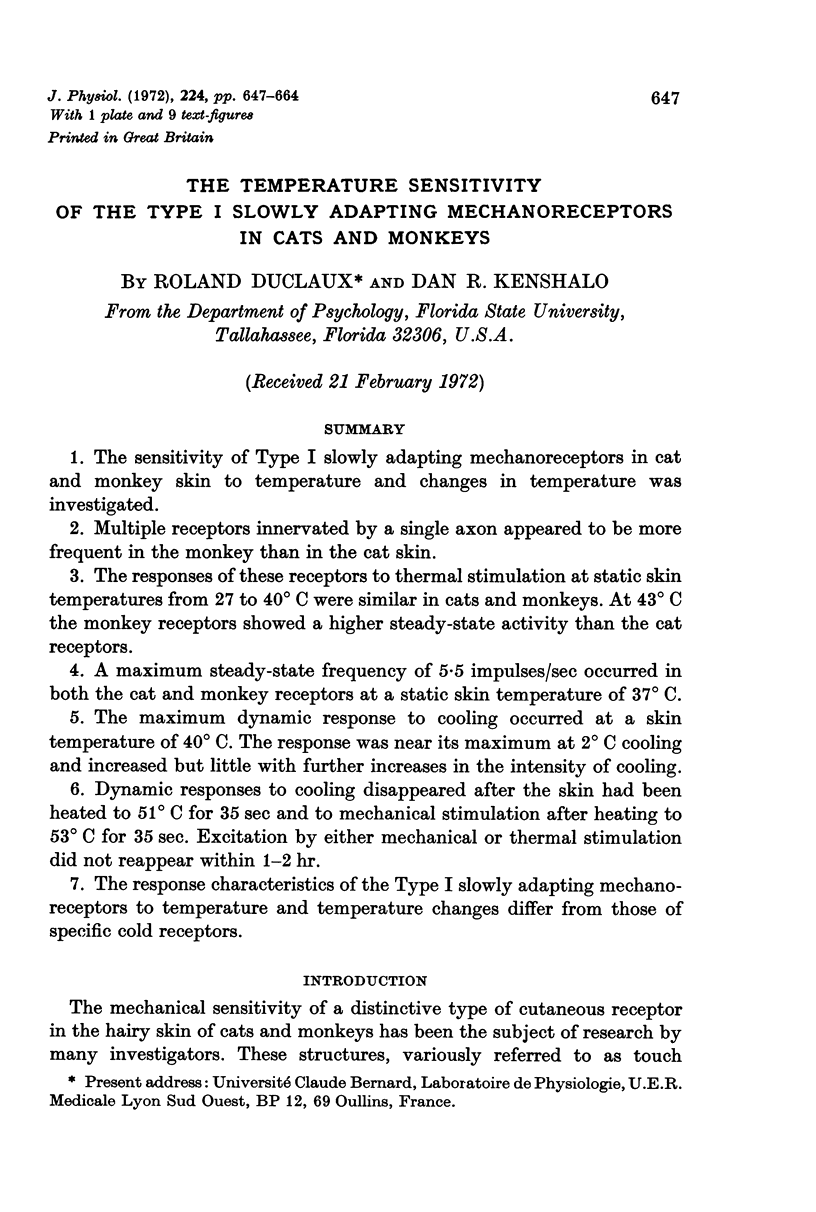
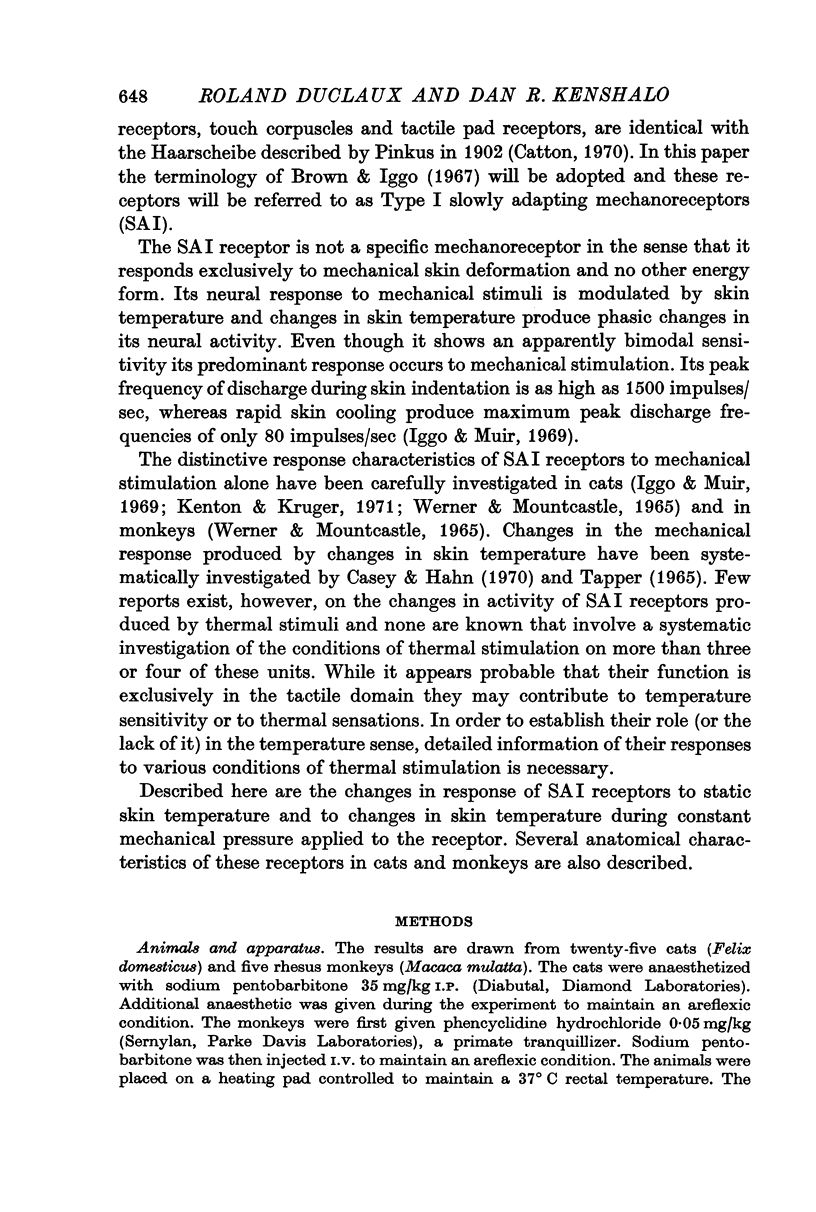
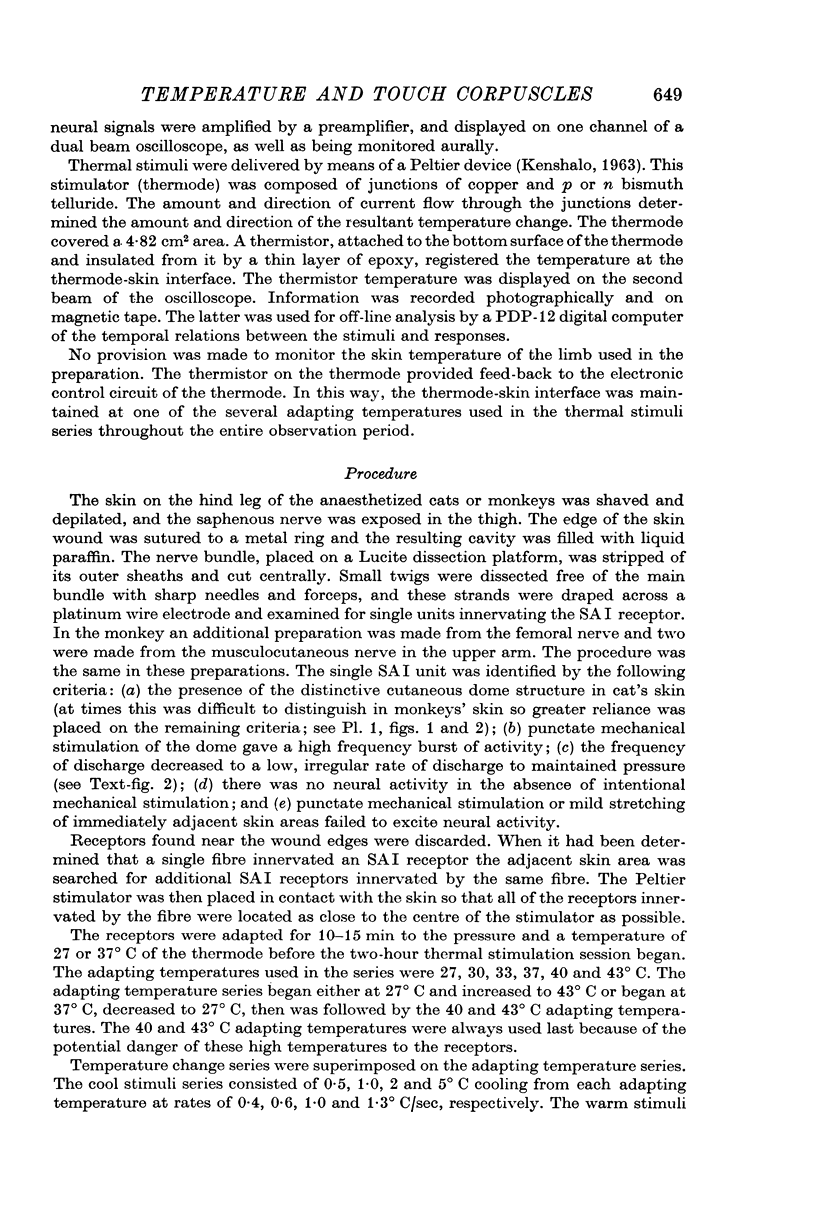
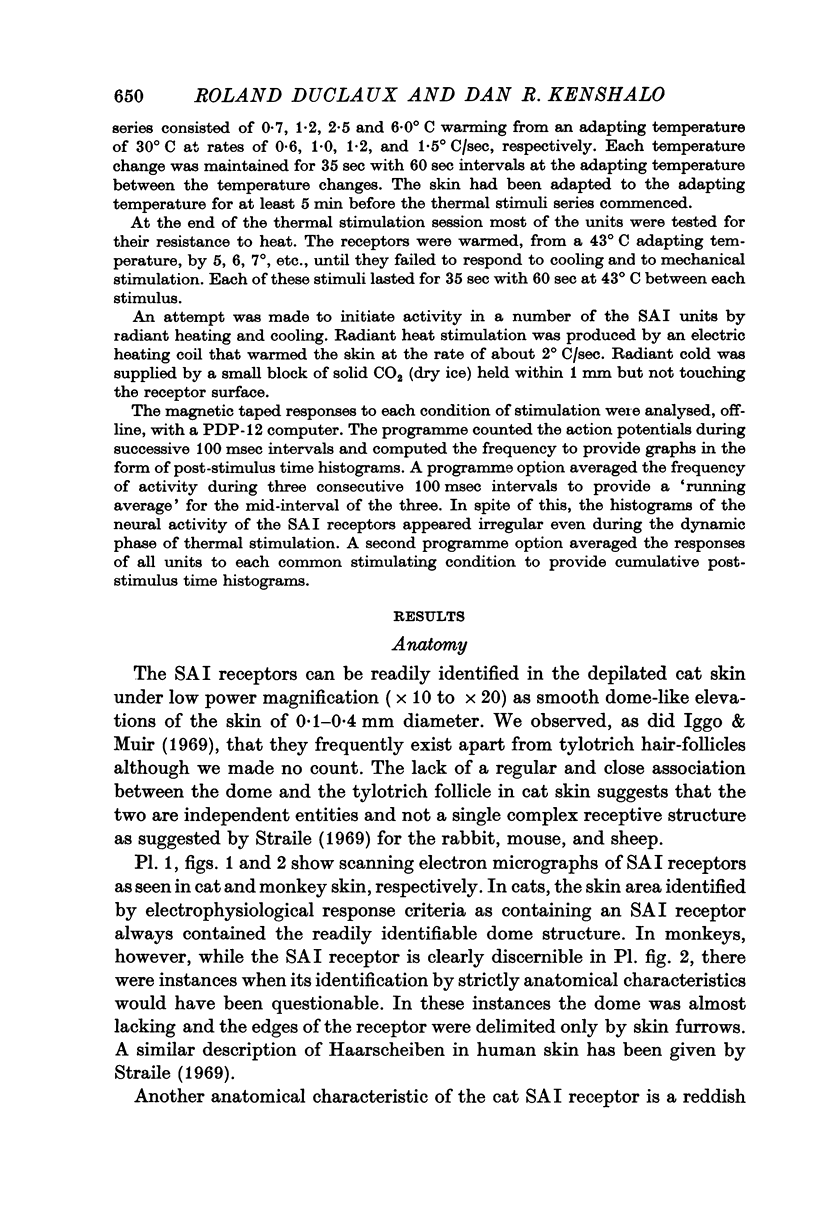
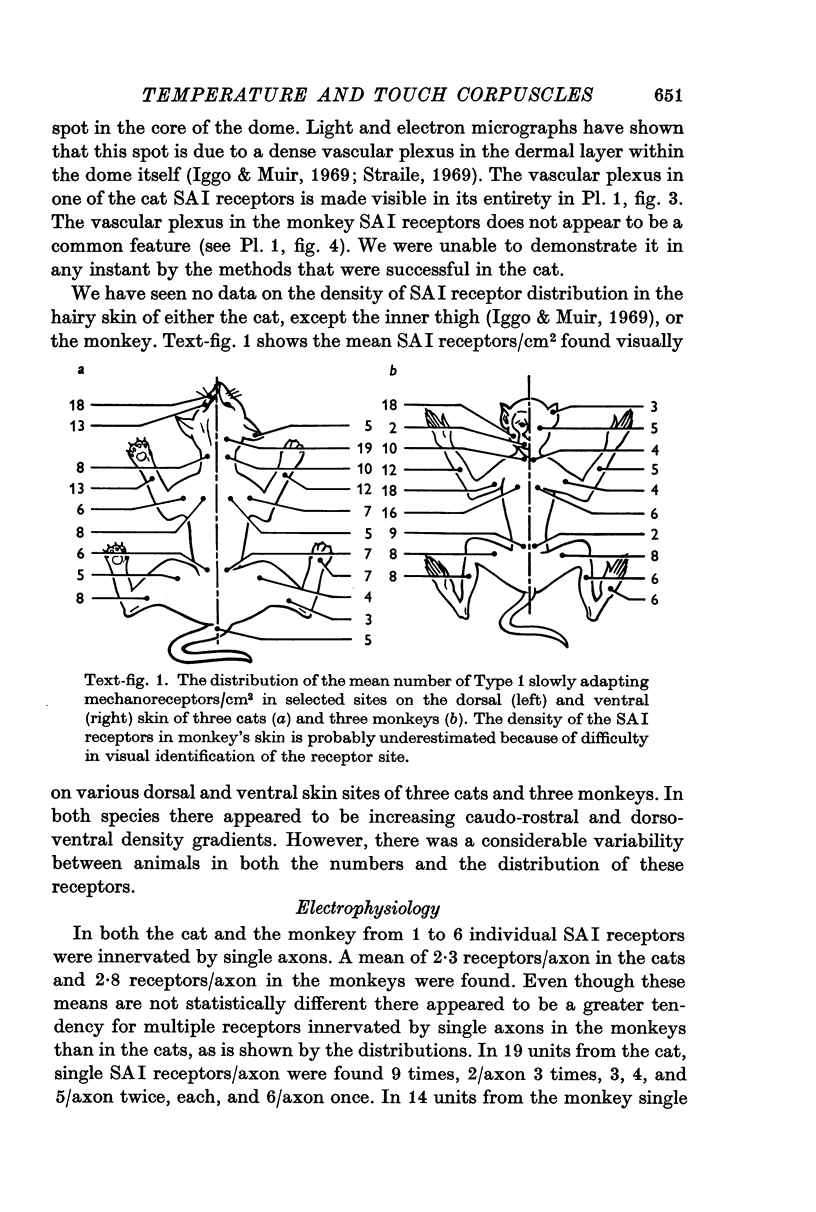
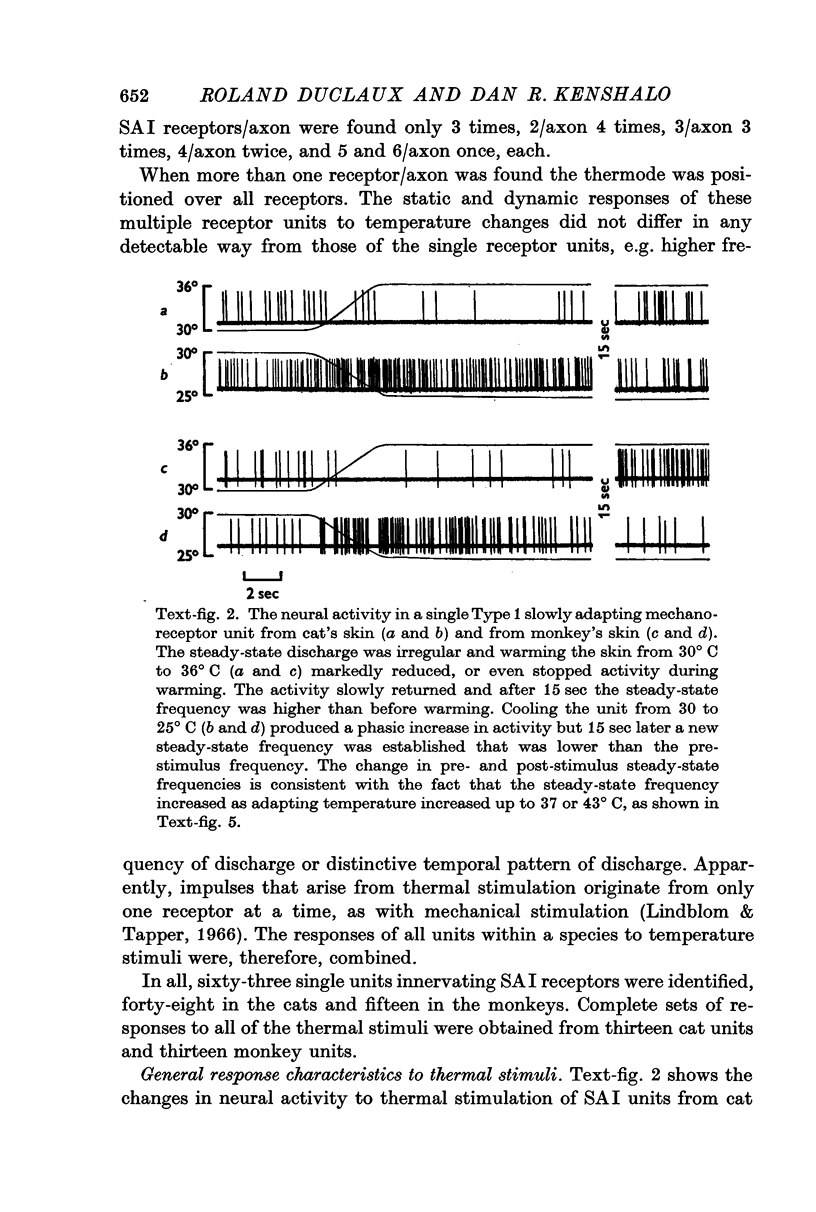
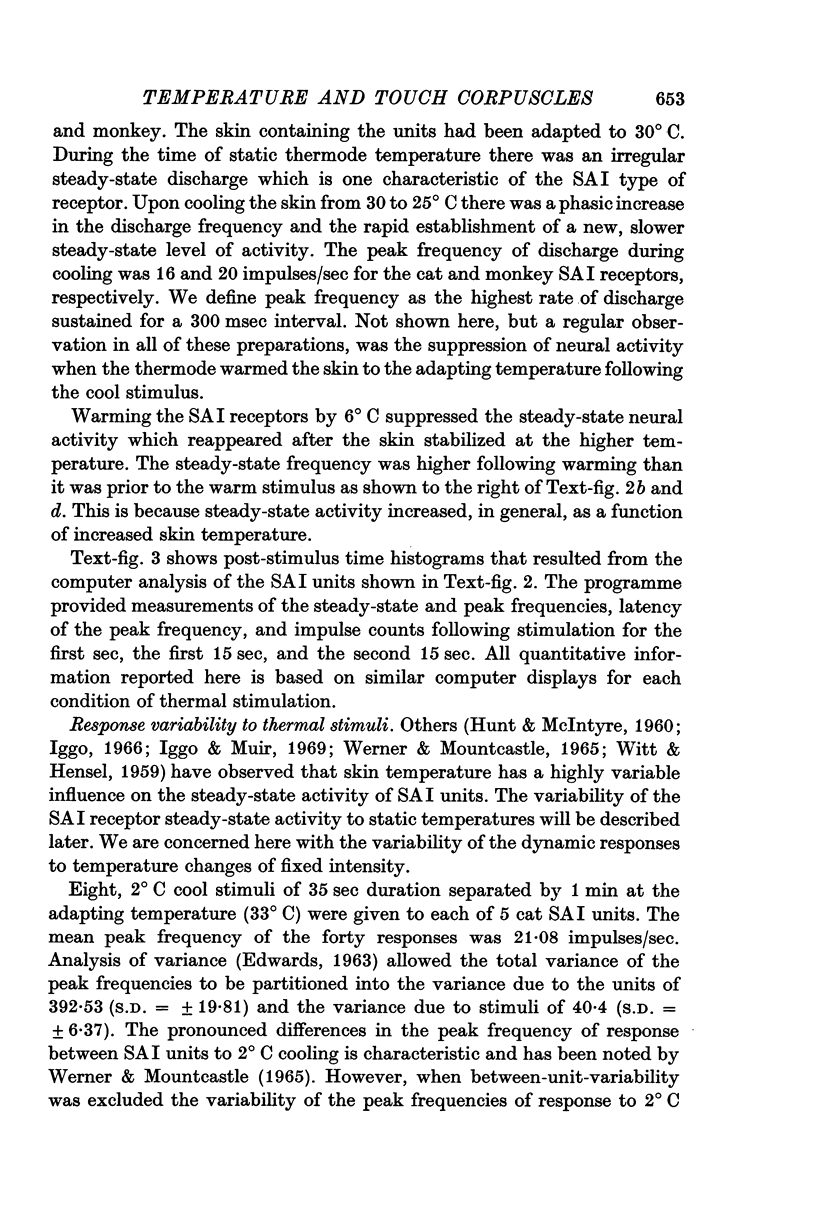
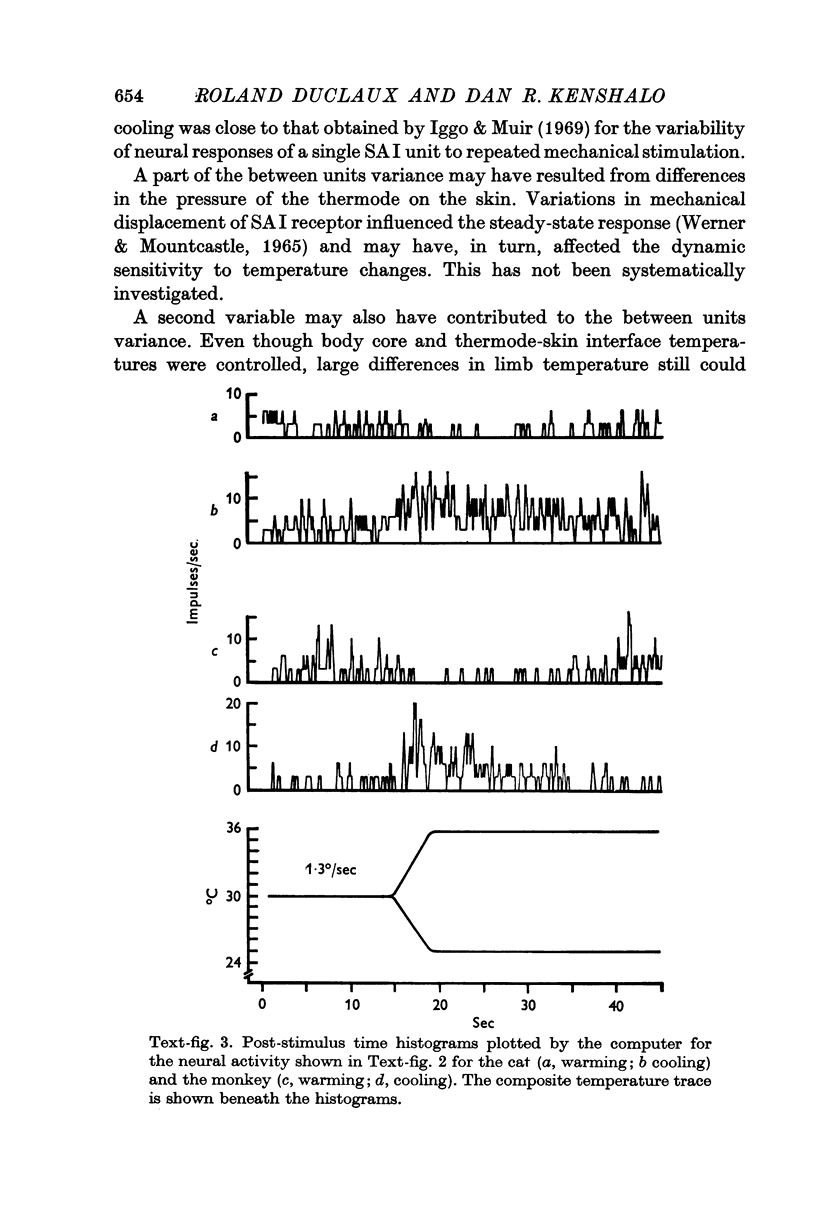
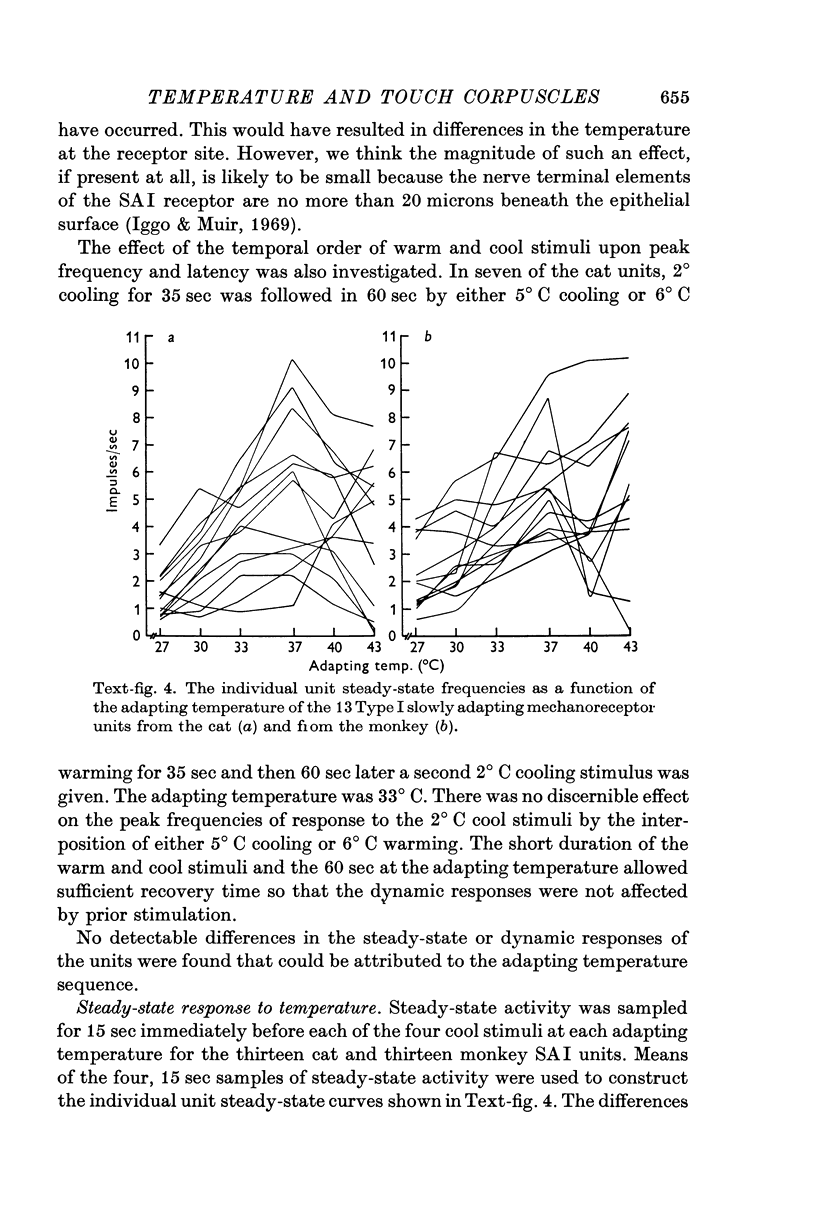
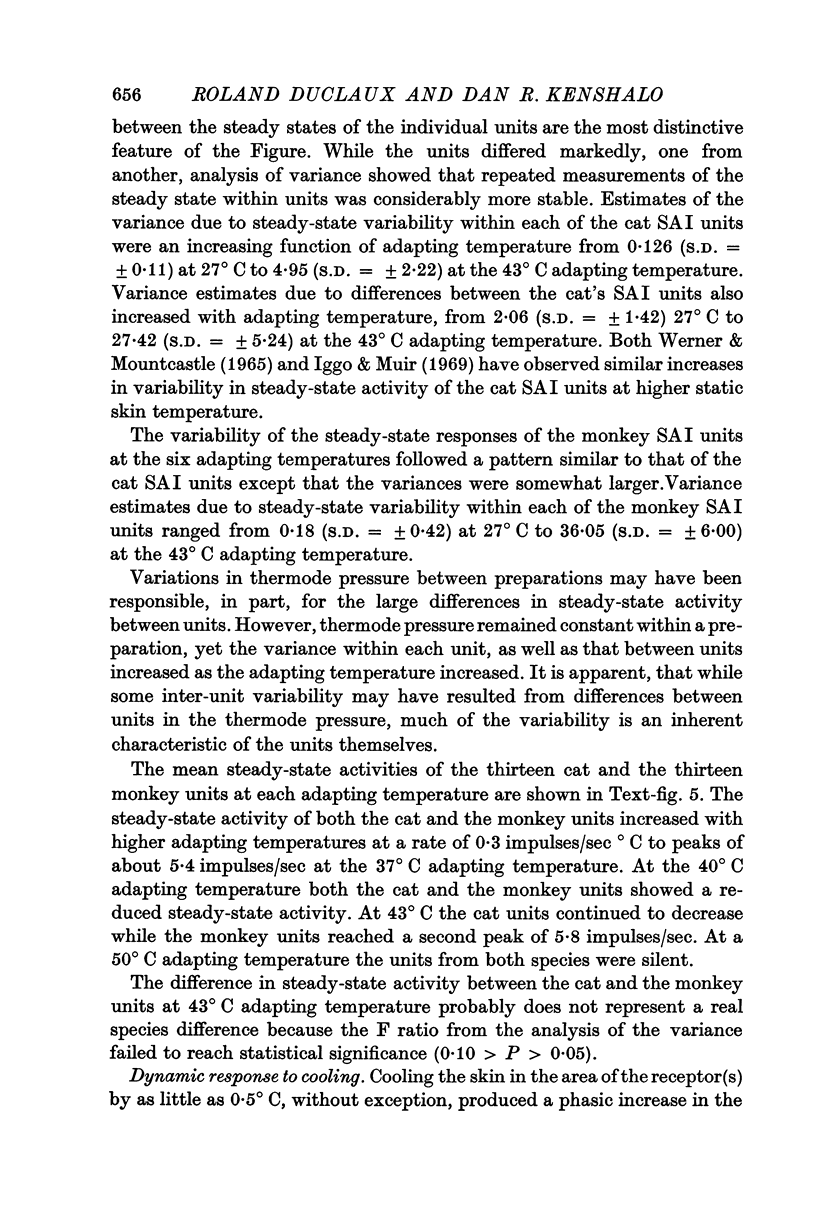
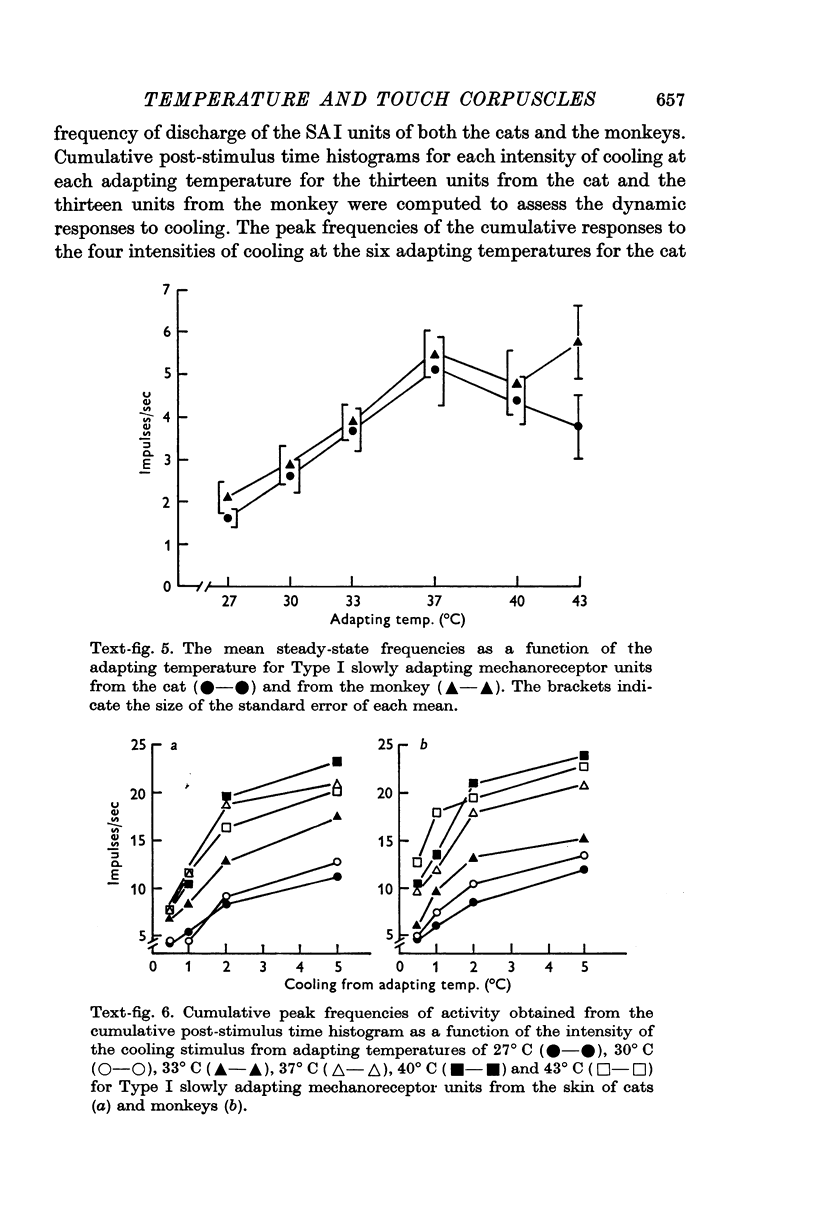
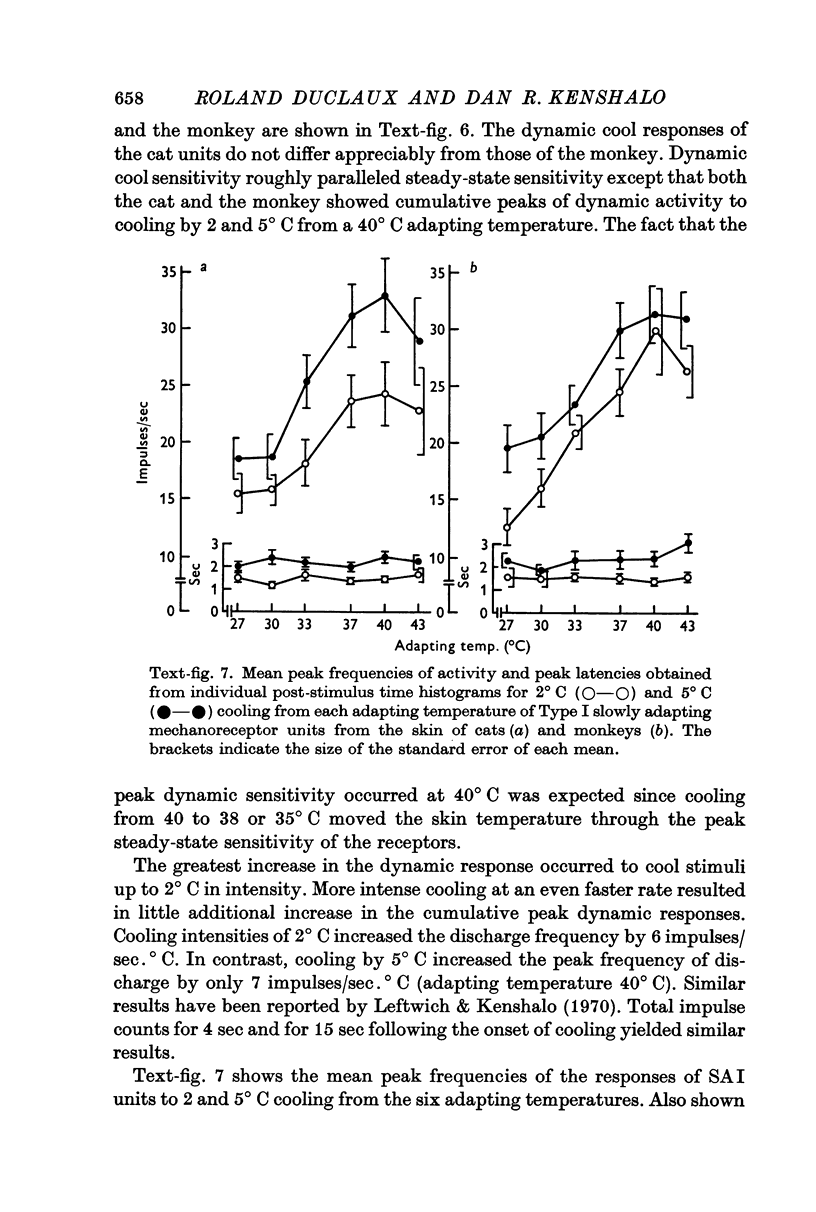

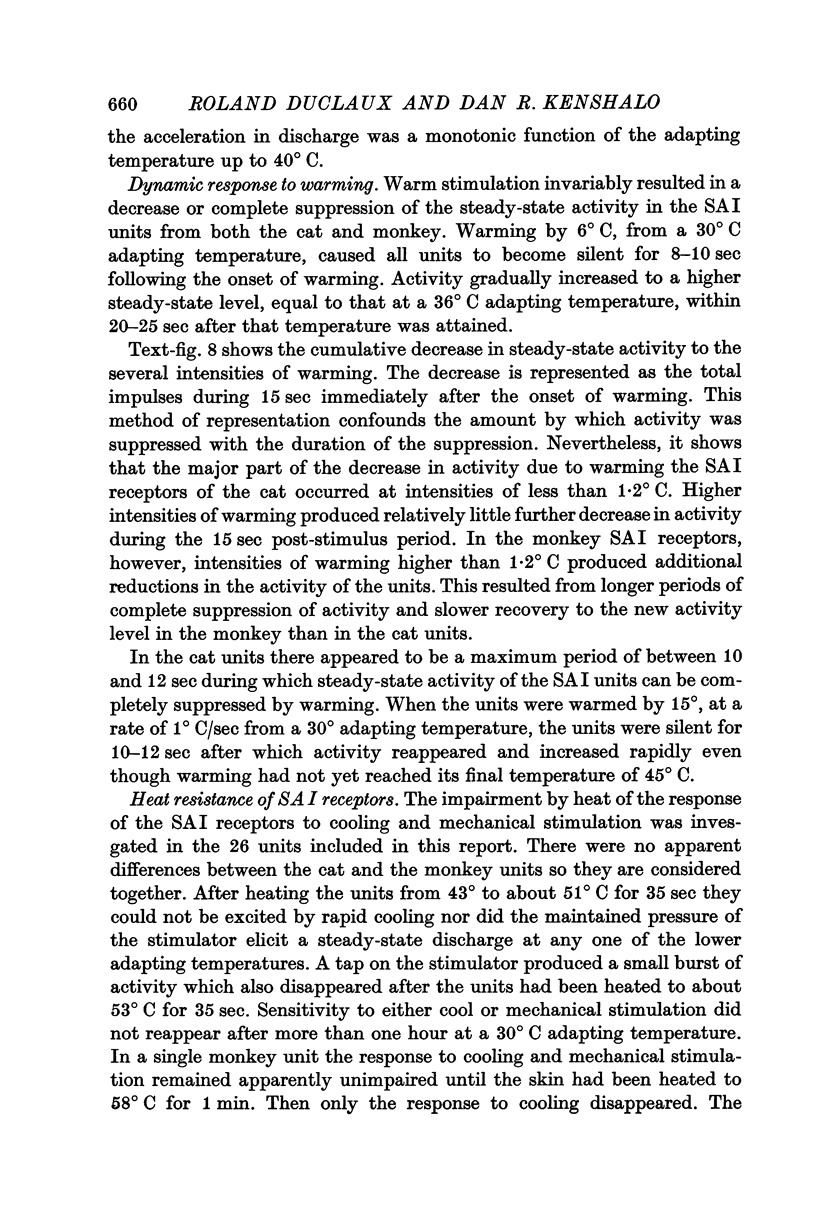
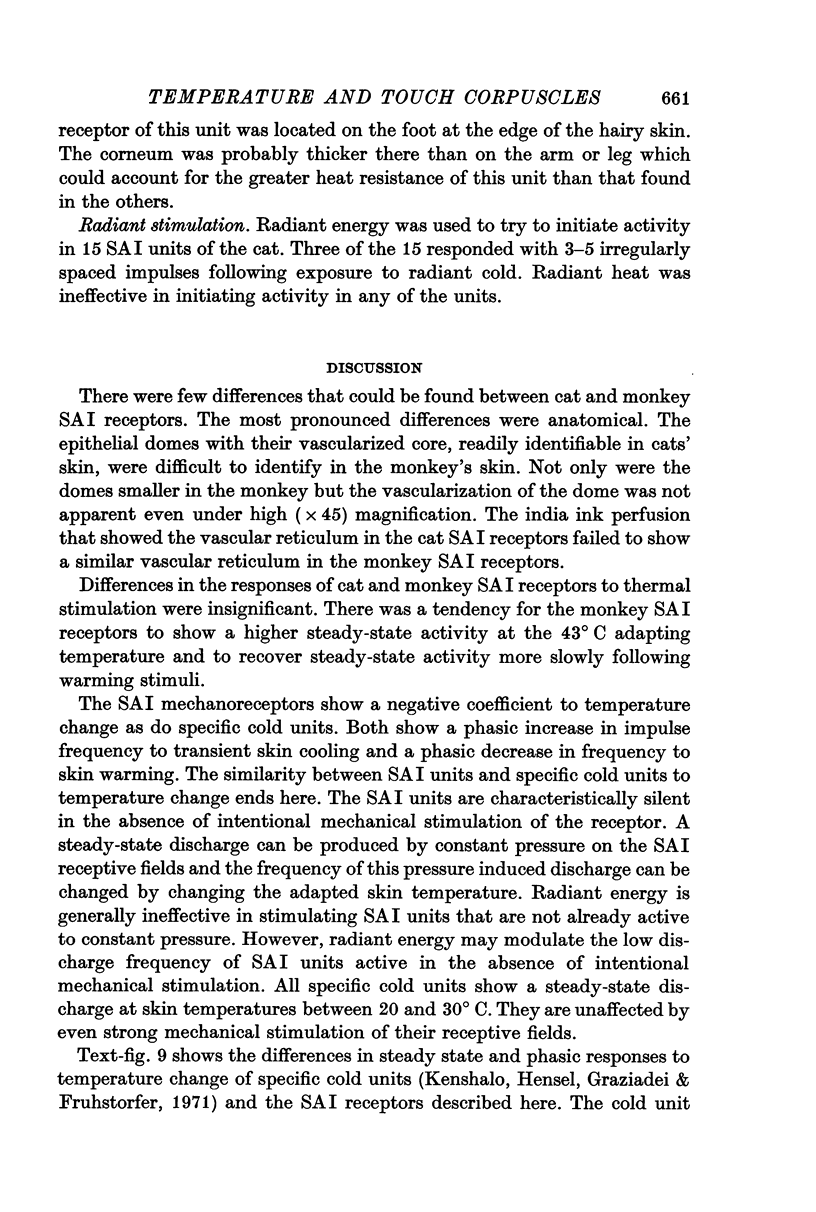
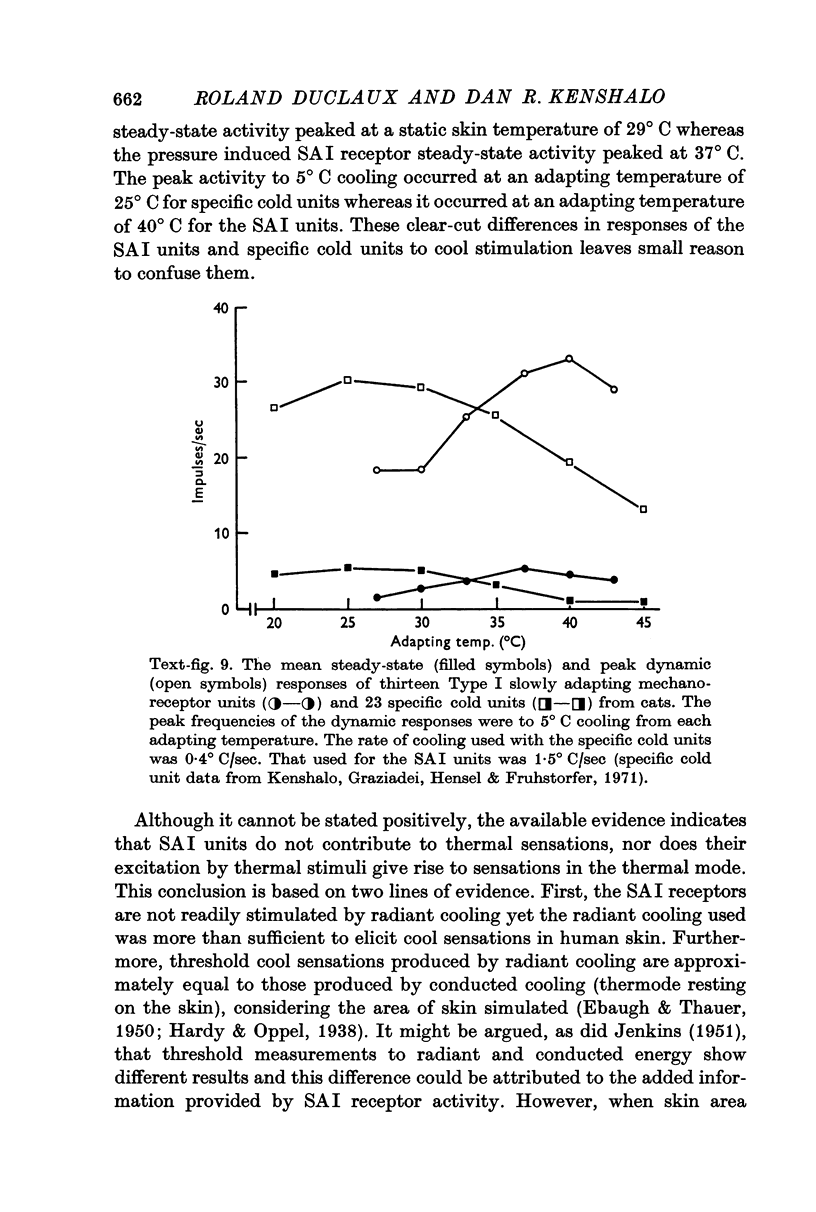

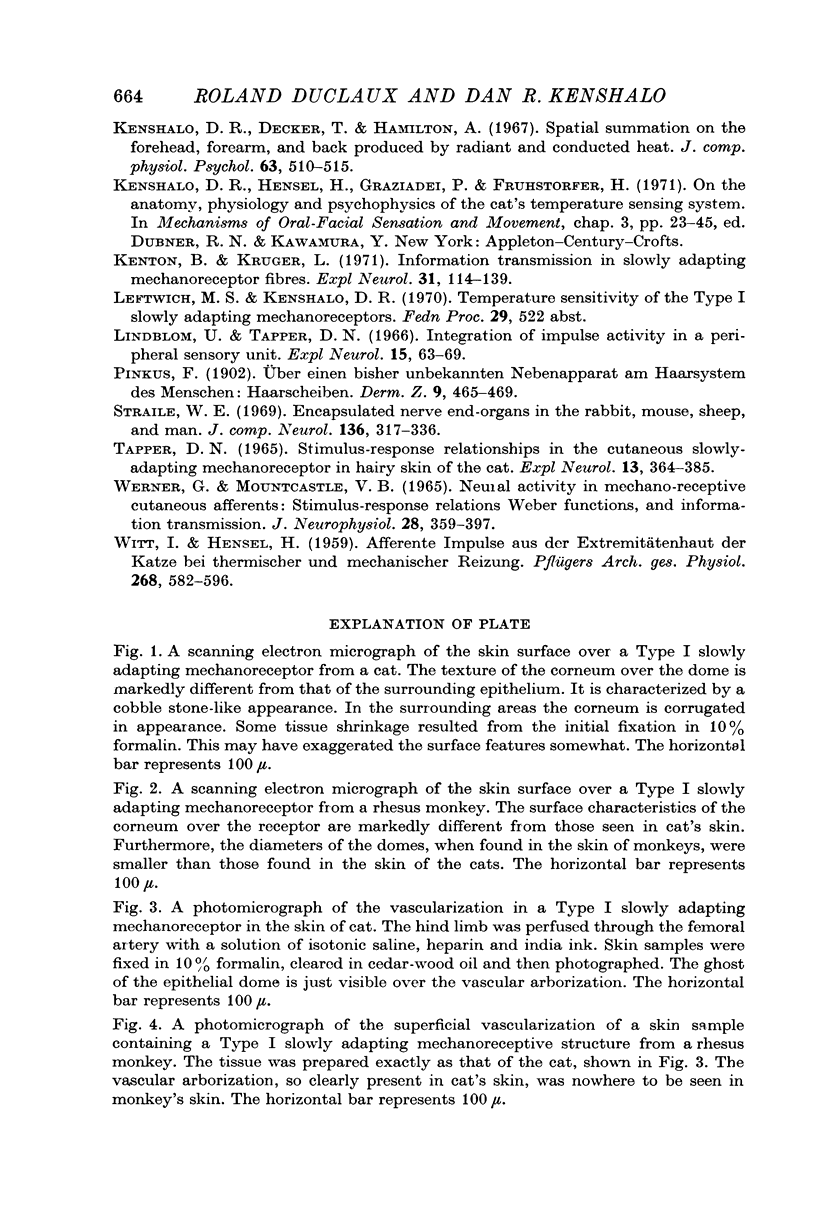
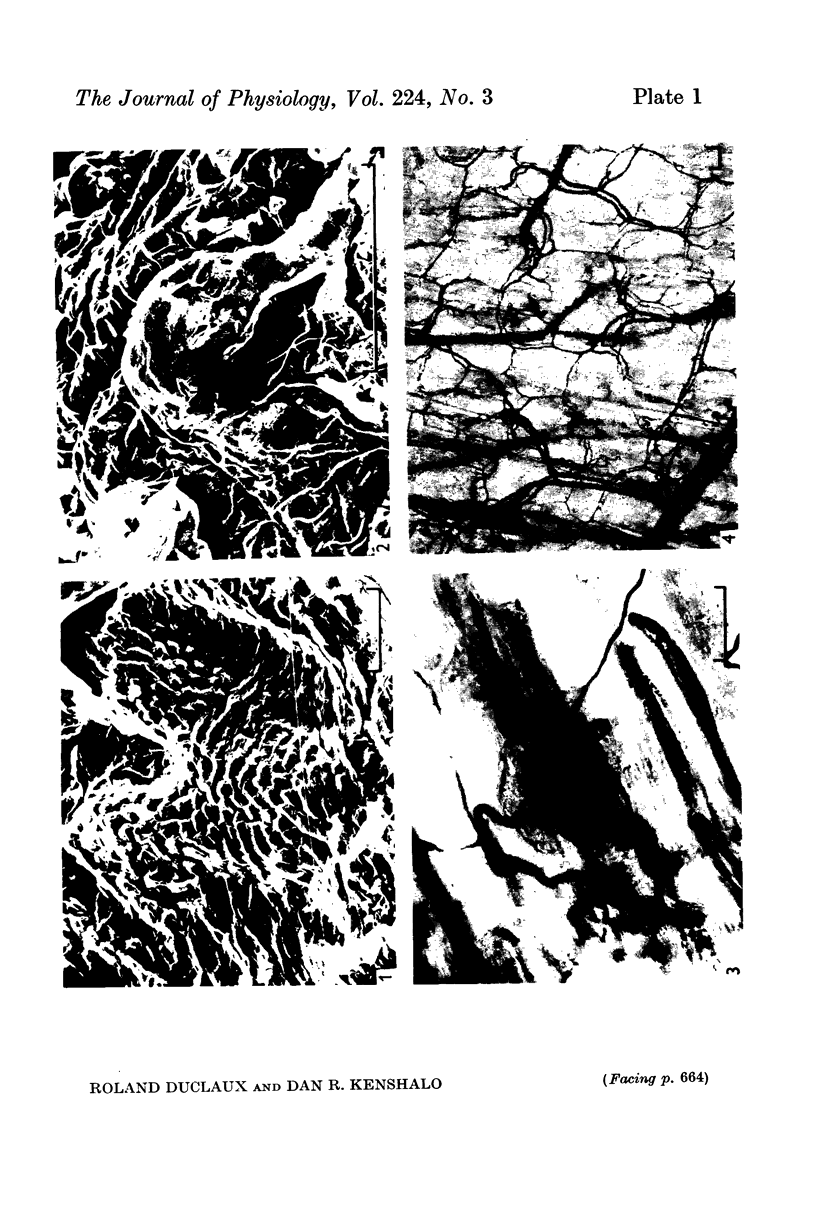
Images in this article
Selected References
These references are in PubMed. This may not be the complete list of references from this article.
- Brown A. G., Iggo A. A quantitative study of cutaneous receptors and afferent fibres in the cat and rabbit. J Physiol. 1967 Dec;193(3):707–733. doi: 10.1113/jphysiol.1967.sp008390. [DOI] [PMC free article] [PubMed] [Google Scholar]
- Casey D. E., Hahn J. F. Thermal effects on response of cat touch corpuscle. Exp Neurol. 1970 Jul;28(1):35–45. doi: 10.1016/0014-4886(70)90160-3. [DOI] [PubMed] [Google Scholar]
- Catton W. T. Mechanoreceptor function. Physiol Rev. 1970 Jul;50(3):297–318. doi: 10.1152/physrev.1970.50.3.297. [DOI] [PubMed] [Google Scholar]
- EBAUGH F. G., Jr, THAUER R. Influence of various environmental temperatures on the cold and warmth thresholds. J Appl Physiol. 1950 Oct;3(4):173–182. doi: 10.1152/jappl.1950.3.4.173. [DOI] [PubMed] [Google Scholar]
- HUNT C. C., McINTYRE A. K. Properties of cutaneous touch receptors in cat. J Physiol. 1960 Aug;153:88–98. doi: 10.1113/jphysiol.1960.sp006520. [DOI] [PMC free article] [PubMed] [Google Scholar]
- Hardy J. D., Oppel T. W. STUDIES IN TEMPERATURE SENSATION. IV. THE STIMULATION OF COLD SENSATION BY RADIATION. J Clin Invest. 1938 Nov;17(6):771–778. doi: 10.1172/JCI101007. [DOI] [PMC free article] [PubMed] [Google Scholar]
- Iggo A., Muir A. R. The structure and function of a slowly adapting touch corpuscle in hairy skin. J Physiol. 1969 Feb;200(3):763–796. doi: 10.1113/jphysiol.1969.sp008721. [DOI] [PMC free article] [PubMed] [Google Scholar]
- Kenshalo D. R., Decker T., Hamilton A. Spatial summation on the forehead, forearm, and back produced by radiant and conducted heat. J Comp Physiol Psychol. 1967 Jun;63(3):510–515. doi: 10.1037/h0024610. [DOI] [PubMed] [Google Scholar]
- Kenshalo D. R. Psychophysical studies of temperature sensitivity. Contrib Sens Physiol. 1970;4:19–74. doi: 10.1016/b978-0-12-151804-2.50008-5. [DOI] [PubMed] [Google Scholar]
- Kenton B., Kruger L. Information transmission in slowly adapting mechanoreceptor fibers. Exp Neurol. 1971 Apr;31(1):114–139. doi: 10.1016/0014-4886(71)90181-6. [DOI] [PubMed] [Google Scholar]
- Lindblom Y., Tapper D. N. Integration of impulse activity in a peripheral sensory unit. Exp Neurol. 1966 May;15(1):63–69. doi: 10.1016/0014-4886(66)90034-3. [DOI] [PubMed] [Google Scholar]
- Straile W. E. Encapsulated nerve end-organs in the rabbit, mouse, sheep and man. J Comp Neurol. 1969 Jul;136(3):317–335. doi: 10.1002/cne.901360305. [DOI] [PubMed] [Google Scholar]
- Tapper D. N. Stimulus-response relationships in the cutaneous slowly-adapting mechanoreceptor in hairy skin of the cat. Exp Neurol. 1965 Dec;13(4):364–385. doi: 10.1016/0014-4886(65)90125-1. [DOI] [PubMed] [Google Scholar]
- WERNER G., MOUNTCASTLE V. B. NEURAL ACTIVITY IN MECHANORECEPTIVE CUTANEOUS AFFERENTS: STIMULUS-RESPONSE RELATIONS, WEBER FUNCTIONS, AND INFORMATION TRANSMISSION. J Neurophysiol. 1965 Mar;28:359–397. doi: 10.1152/jn.1965.28.2.359. [DOI] [PubMed] [Google Scholar]
- WITT I., HENSEL H. Afferente Impulse aus der Extremitätenhaut der Katze bei thermischer und mechanischer Reizung. Pflugers Arch. 1959;268(6):582–596. doi: 10.1007/BF00362294. [DOI] [PubMed] [Google Scholar]



